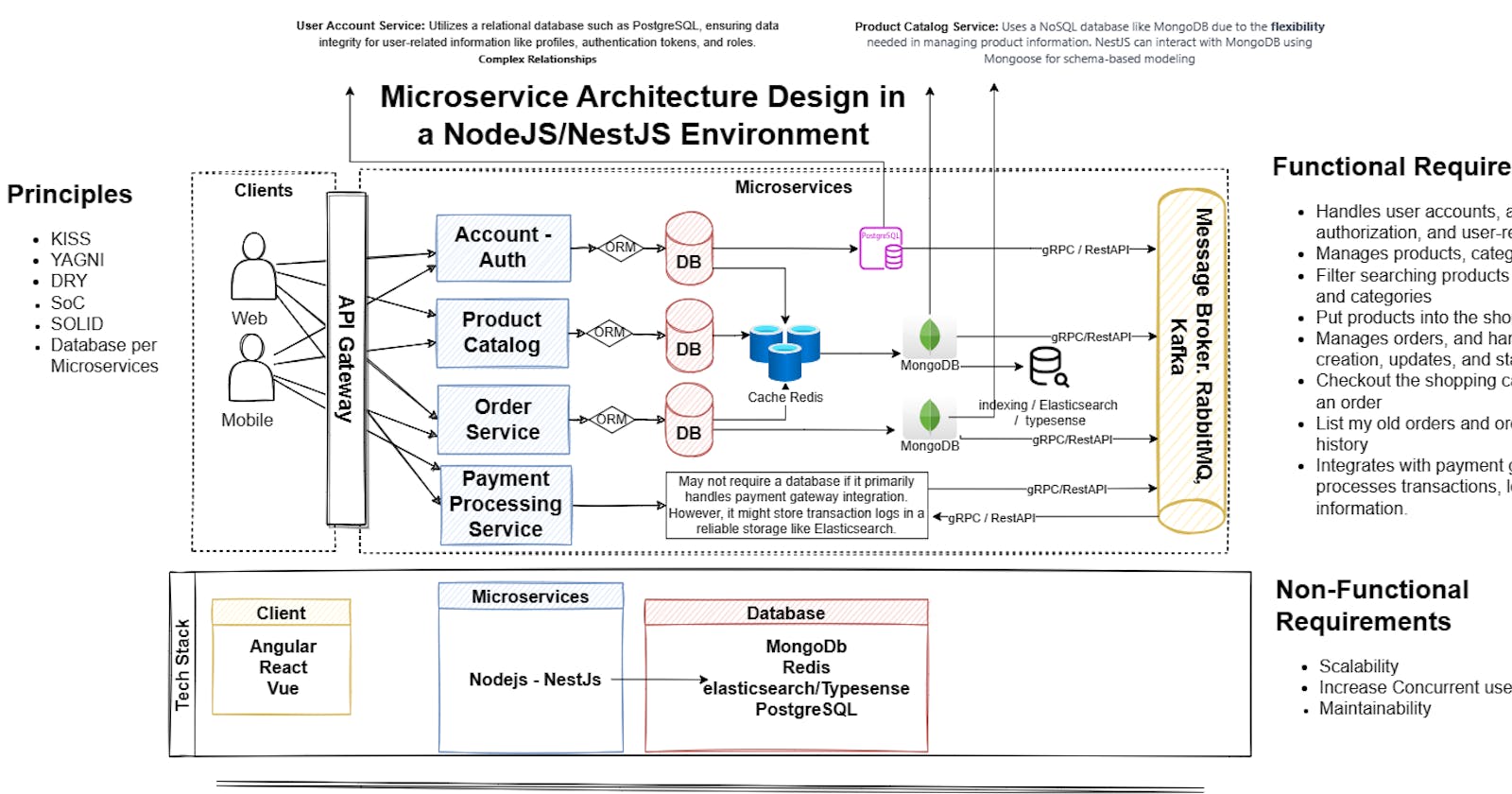Microservice Architecture Design in a NodeJS/NestJS Environment | Online Retail System
Scenario: You are tasked with designing a microservice architecture for an online retail system. This system should manage various aspects like product catalog, user accounts, orders, and payment processing.

Microservices Division:
1. Product Catalog Service
Database: MongoDB or a similar NoSQL database for flexible schema and quick retrieval of product information.
Functionality: Manages products, categories, and inventory.
2. User Account Service
Database: PostgreSQL or MySQL for relational data like user profiles, authentication, and authorization.
Functionality: Handles user accounts, authentication, authorization, and user-related data.
3. Order Service
Database: MongoDB or an SQL database, depending on the complexity of order-related data and the need for transactional integrity.
Functionality: Manages orders, and handles order creation, updates, and status tracking.
4. Payment Processing Service
Database: May not require a database if it primarily handles payment gateway integration. However, it might store transaction logs in a reliable storage like Elasticsearch.
Functionality: Integrates with payment gateways, processes transactions, logs payment information.
Communication between Microservices:
RESTful APIs or GraphQL: Each microservice exposes an API for interaction. NestJS provides excellent tools for building RESTful APIs or GraphQL endpoints, ensuring standardized communication.
Message Broker (Optional): Implement a message broker like RabbitMQ or Kafka for asynchronous communication between services. This ensures loose coupling and better scalability.
Ensuring Data Consistency:
Synchronous Communication: For critical operations requiring immediate consistency (like placing an order), use synchronous communication. Microservices can directly communicate via REST or GraphQL to maintain data consistency.
Eventual Consistency: For non-critical operations (like updating user profile details), asynchronous communication with a message broker allows eventual consistency without blocking services.
Handling Transactions:
Distributed Transactions: Use a two-phase commit protocol or a saga pattern for distributed transactions that span multiple microservices. Implement compensating transactions to handle partial failures and ensure data consistency across services.
Transaction Log/Event Sourcing: Maintain transaction logs or use event sourcing to track changes across microservices. This helps in reconstructing states and resolving inconsistencies.
Security:
JWT Tokens: Implement JWT (JSON Web Tokens) for authentication and authorization across services. NestJS provides robust authentication mechanisms.
HTTPS: Ensure secure communication between microservices using HTTPS to prevent data breaches.
System Reliability:
Monitoring and Logging: Implement logging and monitoring systems (e.g., ELK stack, Prometheus, Grafana) to track system health, performance, and errors.
Containerization and Orchestration: Use Docker for containerization and Kubernetes for orchestration to ensure scalability, fault tolerance, and easy deployment.
In summary, this architecture separates concerns into manageable services, uses appropriate databases based on data needs, employs communication strategies for consistency, handles transactions in distributed environments, prioritizes security, and ensures system reliability through monitoring and containerization.
